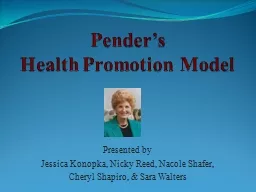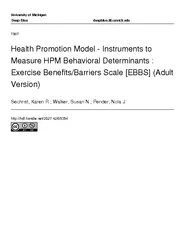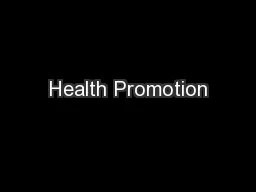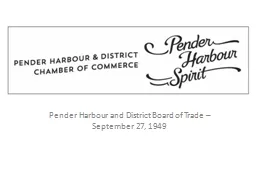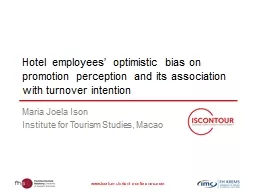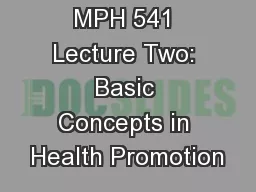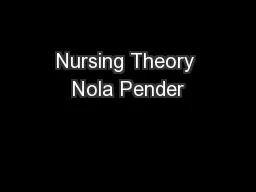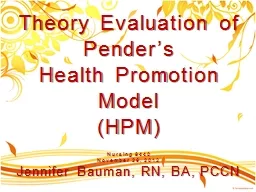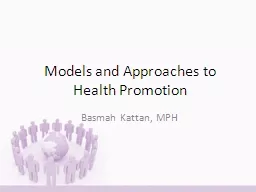PPT-Pender’s Health Promotion Model
Author : natalia-silvester | Published Date : 2018-10-31
Presented by Jessica Konopka Nicky Reed Nacole Shafer Cheryl Shapiro amp Sara Walters Introduction Purposes and Issues questions or problems to solve Introduction
Presentation Embed Code
Download Presentation
Download Presentation The PPT/PDF document "Pender’s Health Promotion Model" is the property of its rightful owner. Permission is granted to download and print the materials on this website for personal, non-commercial use only, and to display it on your personal computer provided you do not modify the materials and that you retain all copyright notices contained in the materials. By downloading content from our website, you accept the terms of this agreement.
Pender’s Health Promotion Model: Transcript
Download Rules Of Document
"Pender’s Health Promotion Model"The content belongs to its owner. You may download and print it for personal use, without modification, and keep all copyright notices. By downloading, you agree to these terms.
Related Documents

